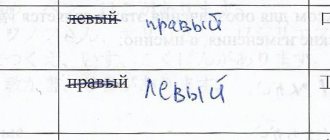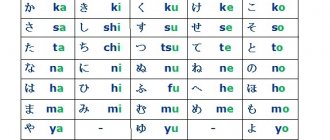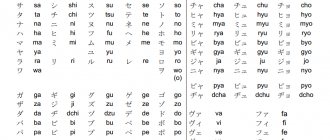This is due to the fact that the Japanese language has three types of writing: hiragana, katakana and kanji.
Actually, the Japanese alphabet, consisting of 48 letters each, is hiragana and katakana. The letters of these alphabets themselves are certain sounds, like the letters in our alphabet. They have no meaning or significance of their own. It's quite easy to remember them. Each word can be written in hiragana and katakana. The difficulty lies in the Japanese characters and their meaning - these are kanji (漢字), which came to the Japanese language from China. Therefore, a fairly relevant topic for language learners is how to learn Japanese Kanji characters.
Why you should learn Kanji
Of course, you don't need to learn kanji to speak Japanese fluently. You can learn Japanese simply by watching dramas. But we think it's important to learn kanji for the following reasons.
First, learning to speak any language means learning to read it. You can't say you know a language if you don't read it. This is taken for granted with languages such as Spanish or German, which use the same alphabet as English. But those learning languages like Arabic and Korean also need to take the time to learn to read. For Japanese language learners, this means that you will need to master the world of kanji.
Secondly, learning kanji helps you understand new words better. Kanji characters each have their own meaning, and if you know these meanings, it is easier to understand new words.
Finally, if you ever plan to live in Japan, learning kanji is essential for survival. You'll be surprised how few signs are in English, especially when you travel outside of major cities.
The main Japanese characters you need to know are 2136 kanji, the minimum required, so to speak.
What makes Japanese easy to learn?
Time to dispel a few myths about the Japanese language and prove that learning it can be quite easy in many aspects. For example:
Learning Kanji just got a lot easier
What scares people most when learning Japanese is the kanji, or Chinese characters, used in Japanese writing. However, now they can be learned much faster thanks to the development of technology and the advent of smartphones and special applications. Once you learn romaji - the romanization order of Japanese syllables - you can look up kanji on the Internet, an online dictionary, and type them on your computer using tooltips.
Japanese writing is not only hieroglyphs
In addition to Chinese characters, each of which can denote a separate word, Japanese has two more writing systems, that is, two alphabets - hiragana and katakana. They are symbols with which individual syllables and words are written. In this case, mostly words of non-Japanese origin are written in katakana, and Japanese ones, for which there is no kanji, are written in hiragana. They are much easier to remember, and subsequently to distinguish in the text, read and write.
Many borrowings from English
Good news for those learning English: words borrowed from it make up a fairly large group of Japanese vocabulary. For example, wife (“wife”) in Japanese was transformed into waifu, news (“news”) - into nyuusu, etc. Of course, in Japanese these words are pronounced slightly differently than in English, but their phonetic pattern is very similar. Once you learn the rules of Japanese pronunciation of foreign words, you will notice English borrowings without much difficulty.
Easy pronunciation
And since we are talking about pronunciation, it is quite simple in Japanese. In fact, it contains only 5 vowels and 14 consonants. Many sounds even practically coincide with the sounds in more familiar English, for example, konnichiwa can be translated into English transcription as . It's easier to learn Japanese pronunciation because it doesn't have diphthongs - a combination of two vowel sounds (like [əʊ] in the English word tone or like [aə̯] in the German word Reich), nor a combination of consonants (like in the word "hello" or word angsts). Additionally, unlike many other East Asian languages such as Chinese, Thai and Vietnamese, Japanese is a non-tonal language.
Noun gender? Did not hear!
French, Italian and other Romance languages are complicated by the presence of two or even three genders of nouns - masculine, feminine and neuter. But when trying to learn Japanese, you won’t have to torture yourself at all with cramming noun forms.
Syllables are pronounced only one way
Let us again compare Japanese with English, where the same combination of sounds can differ in pronunciation in different cases, for example: apple, vary, able, where the sound in different syllables is pronounced respectively as [æ], [eə], [eı]. Learning Japanese is much easier in this regard, since all of its 45 basic syllables are read only one way and no other way.
A few rules for learning kanji
The first rule for learning Japanese characters
Do not hurry. In any case, memorizing kanji will take some time, up to several years. There are programs that promise training in 3 months, but you need to understand what level of knowledge you will receive. Of course, the intensity of training also plays a role, but even with fairly intensive training, it can take up to 2 years to know hieroglyphs well.
The second rule for learning kanji
As simple as it sounds, one of the important principles of how to learn Japanese characters is repetition. Without systematic repetition, kanji will be forgotten. This happens even among the Japanese themselves, if they practically do not use some of the kanji. Therefore, set aside time for repetition, for example, on the road, look at your notes or pictures of Japanese characters in special programs on your phone. It’s good if you train your visual memory for hieroglyphs, but don’t forget about writing them. Both aspects need to be practiced.
Third rule
The peculiarity of Japanese characters is that they have two ways of reading. This sometimes discourages people from learning Japanese because... seems too confusing. But let's just get this straight.
One way of reading is the Japanese reading, when the hieroglyph is an independent word.
The second method is the Chinese reading, when the character is only part of a word or a character consisting of several characters.
Let's take the word "dog" 犬 as an example. The Japanese reading would be "inu". The Chinese reading of the character is ken. The name of one dog breed is Akita-ken 秋田犬. Here at the end you can see the kanji meaning "dog". Start with simple, basic hieroglyphs and then your learning will progress.
The fourth rule for learning hieroglyphs
There are complex kanji made up of multiple elements, such as 蓋, which means "lid". In such cases, it is worth breaking the kanji into elements, otherwise called radicals, so it will be easier to remember what the Japanese characters mean. If we take the above kanji, then here, the bottom element means “plate” 皿, the middle one means “to leave” 去る and the top kanji means “grass”. You yourself can come up with an association to connect these concepts so that it is easier to remember the entire kanji. You can also create associations with the symbols themselves. For example, the kanji for "person" looks like a person. Everyone can have their own association. The main thing is that this is an effective method that helps many in this difficult process of learning kanji.
Japanese language. Japanese characters. Effective ways to memorize hieroglyphs. Part 1
Japanese language. How to learn Japanese characters. Effective ways to memorize Japanese characters.
Very often, those who begin to learn Japanese are faced with the problem of memorizing hieroglyphs. It is difficult for some to remember the hieroglyph itself, how it is written. It is difficult for some to remember the meanings of both “on” (Chinese) and “kun” (Japanese) readings of hieroglyphs, for some it is difficult to remember words and what hieroglyphs these words are written in, and for others it is difficult to read Japanese texts fluently.
In this article, we will look at what ways there are to memorize hieroglyphs, so that you can choose the most suitable method for you.
So, today we will look at the simplest and most common method of memorization, that is, the method of memorizing by repeatedly writing one hieroglyph.
Many people use this method, that is, they simply write the hieroglyph that needs to be remembered 20–30 times (some write it up to 100 times). In general, you need to write a hieroglyph as much as necessary for you to remember it. And then we remember and write in the same way the words that include this hieroglyph.
By the way, many Japanese also memorize hieroglyphs through writing!
When writing a hieroglyph, you can recite all its readings and meanings out loud.
The benefit of this method is that repeated writing helps the hand “remember” the movements and it begins to automatically write the hieroglyph learned in this way.
Here, for the most part, motor (motor) memory is involved. Probably the downside of this method is that it is quite boring.
When I first started learning Japanese , I used only this method to memorize hieroglyphs, but, unfortunately, it was not very effective for me. The hieroglyphs were forgotten...
Therefore, in order to enhance the memorization effect, after you remember and write down the hieroglyph you are studying and the words for it the required number of times, you can listen to the audio recording to consolidate the result.
While listening to an audio recording, you need to imagine how the hieroglyph itself and the words it contains are written. By listening to the audio, it will be easier for you to remember the readings, the meaning of the hieroglyphs, and the words!
In addition, while listening to audio, you can do household or other chores. You can also listen to audio in transport. Thus, the time spent on memorization, which we spend sitting at the table, is reduced. This is convenient for busy people.
So, at the first stage of memorization, write down the hieroglyphs and words given in the first lesson of the mini-training , as many times as necessary for you to remember them. Also, while writing, pronounce the readings and meanings of the hieroglyph, and then the words it includes.
In the second stage of memorization, listen to the audio recording while imagining or recalling the spelling, readings and meanings of hieroglyphs and words.
In the next lesson we will look at another way to memorize hieroglyphs. And also, write in the comments below approximately how many hieroglyphs you know and what other memorization methods you use.
Also, write what is the most difficult thing for you in memorizing hieroglyphs?
This is a useful read:
- What are the Japanese alphabet hiragana and katakana used for? Japanese writing
- Japanese language. How to say the days of the month in Japanese
- Interview with Lyudmila Nechaeva. How to learn Japanese
Tagged ways to memorize hieroglyphs Japanese hieroglyphs Japanese hieroglyphs and their meaning Japanese hieroglyphs pictures Japanese hieroglyphs in Russian Japanese hieroglyphs with translation Japanese hieroglyphs
What else can help when learning kanji?
When studying, we advise you not to neglect the correct order and direction of the lines, so as not to remember the incorrect spelling. It may seem to you that there is no point in remembering the direction and order when writing hieroglyphs because as a result you get the same thing. But we must keep in mind that many kanji when written may look completely different from how they appear when printed. If you know the correct order of writing kanji, you will be able to recognize them if they are written by hand and quickly.
Consistency is very important. Even if you can only devote 15 minutes each day to study, it will lead to results. Try to stay consistent and notice when you start to see results. Your successes motivate you to achieve further victories.
Use a large dictionary, book or online resource
Whenever you learn a new kanji, check it in your dictionary and see what words it means. This will help you understand the meaning and see how to use it. Most kanji teaching materials offer several common lexical meanings for each kanji. A free online resource for most Japanese learners is WWWJDIC by Jim Breen. Another great resource is Kanji Damage: a very practical and context-oriented online kanji book. Contains about 1700 kanji.
Japanese students learn kanji in a set order. There is a set of kanji for each grade, and so on from first year until the end of high school. There is a reason why the Japanese education system teaches kanji in this order, but it probably won't suit you as a foreigner. Some textbooks or schools use one approach, while others use a different approach. Don't limit yourself to one approach; just start somewhere and stick to your style.
Exercise yourself
As soon as we started learning hieroglyphs, I realized that school copybooks were not enough for me. I went to the stoyannik, bought an ordinary thick notebook and began to carry it in my bag. Got a free minute? I open my notebook and start writing kanji. I can study in class during recess, at home, in a cafe, and even on the train when I’m going for a walk.
I advise you to write not only hieroglyphs, but also words with them. For example, first I write the sign 会 in a line, and then I remember the words with it (会う - “to meet”, 会社 - “company”, etc.). This will make it easier to memorize kanji.
Read something interesting
When you learn something interesting and exciting, it will give you the motivation to continue learning even when things get very difficult. Select real-life publications that interest you, such as magazines, comics, or books that you enjoy. It is also interesting and useful to watch cartoons and films with subtitles.
Another good way to learn kanji in practice is through email. There are many sites where you can easily find people to talk to. Through daily interaction, you will learn the kanji that are most commonly used in everyday life by Japanese people.
If you have a native speaker friend, ask a Japanese friend to test you. Try writing some of the kanji that you have in mind and see your friend's reaction. There are many subtleties to writing kanji, and the best way to figure them out is to have a native speaker friend point out your mistakes.
It's one thing when you set goals for yourself and then retreat from them. But it's completely different when you tell your friends about them. A good way to not give up in the face of challenges is to publicly announce your goals. Share your plans and growth on social media or start a blog about your learning of beautiful Japanese characters. Then it will not be so easy for you to deviate from your study goals.









